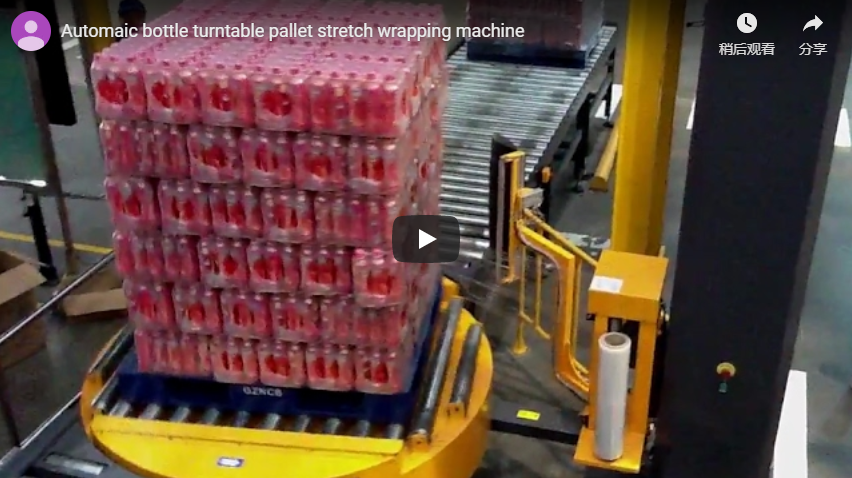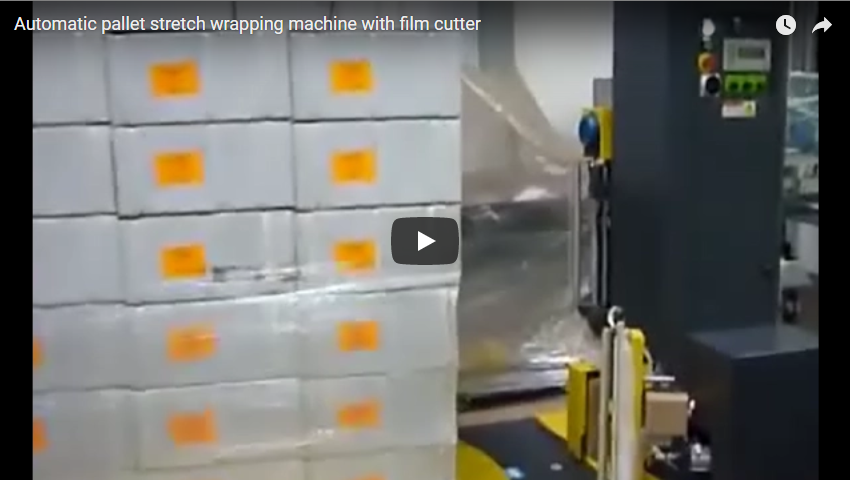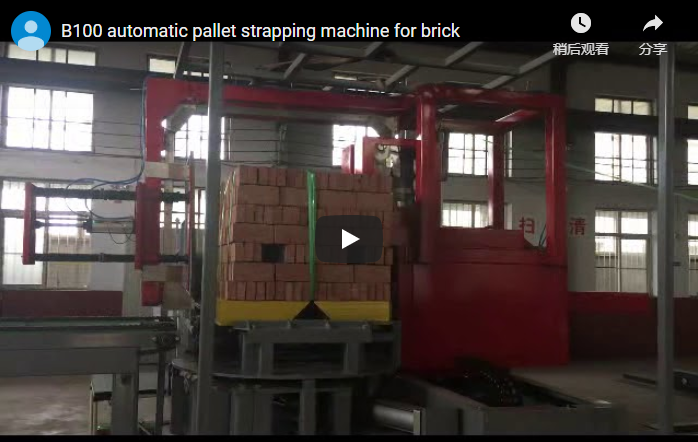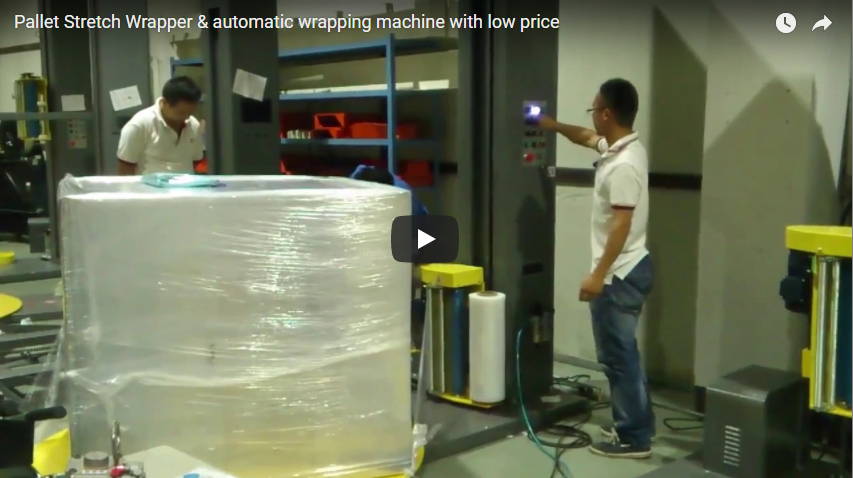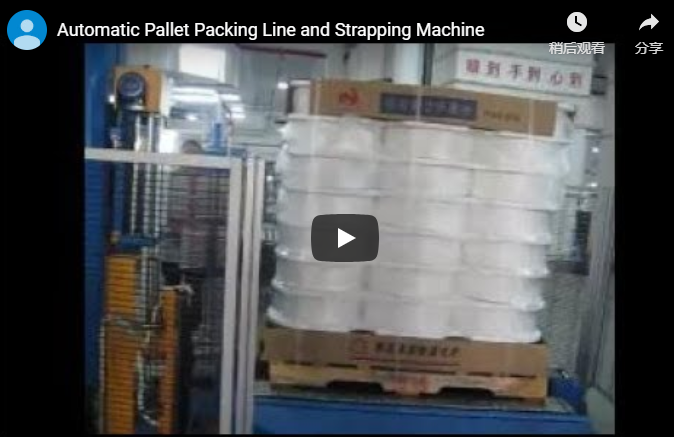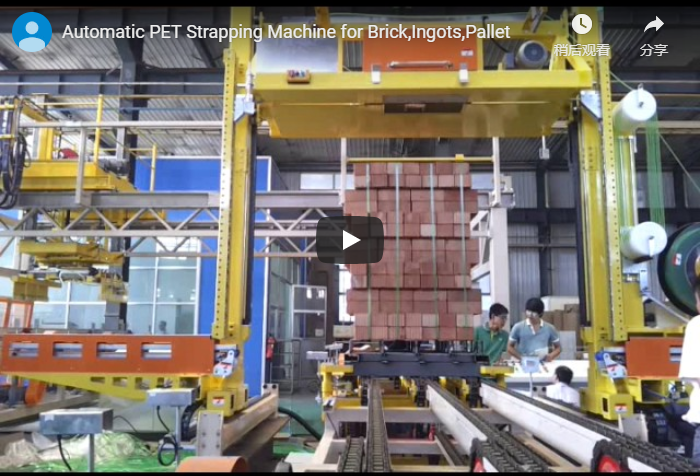Streamlining End-of-Line Packaging: A Closer Look at FHOPE's Automatic Pallet Strapping and Packing Machine
In the demanding world of manufacturing, logistics, and warehousing, efficient and reliable end-of-line packaging isn't just a necessity – it's a competitive advantage. Manually strapping and wrapping pallets is often time-consuming, inconsistent, and labor-intensive. This is where automated solutions shine, and integrated systems combining both strapping and stretch wrapping offer significant benefits. Let's delve into the capabilities of an automatic pallet strapping and packing machine, focusing on the solutions provided by FHOPE.
Caption: FHOPE's integrated system demonstrating automatic pallet strapping and wrapping.
1. The Challenge: Ensuring Load Stability and Throughput
Securing palletized loads effectively is critical for several reasons:
- Product Protection: Prevents damage during transit and handling.
- Safety: Stable loads are less likely to shift or collapse, protecting personnel and equipment.
- Cost Efficiency: Reduces product loss, returns, and potential OHS incidents.
- Customer Satisfaction: Ensures goods arrive in expected condition.
Traditional methods, involving separate manual or semi-automatic stations for strapping and wrapping, can create bottlenecks, require more floor space, and introduce variability depending on the operator. An integrated automatic pallet strapping and packing machine addresses these challenges head-on.
2. The Integrated Solution: How FHOPE's System Operates
FHOPE specializes in manufacturing robust automatic pallet strapping and packing machines designed for seamless integration into production or warehousing lines. These systems typically combine a strapping head and a stretch wrapping module within a single, automated unit, often managed by a unified PLC control system.
The general process flow involves:
- Infeed: Palletized loads arrive via an integrated conveyor system.
- Positioning: The pallet is precisely positioned for strapping.
- Strapping: The automatic strapping machine applies one or more straps (typically PET or PP) horizontally or vertically around the load according to pre-set patterns and tensions. The strap is automatically fed, tensioned, sealed (often via friction-welding for strength and reliability), and cut.
- Transfer: The strapped pallet moves to the wrapping section.
- Stretch Wrapping: An automatic stretch wrapper (turntable or rotary arm style, depending on application) applies stretch film around the load. Key parameters like film pre-stretch, wrapping force, top/bottom wrap counts, and reinforcement wraps are precisely controlled.
- Outfeed: The fully secured pallet exits the machine via the conveyor system, ready for dispatch or storage.
From our experience observing these systems in action, the smooth transition between strapping and wrapping within one automated sequence is key to maximizing throughput and minimizing manual intervention.
3. Diving Deeper: Key Technical Specifications and Features
When evaluating an automatic pallet strapping and packing machine like those from FHOPE, consider these technical aspects:
- Strapping Unit:
- Strap Type: Compatible with Polypropylene (PP) or Polyester (PET) straps.
- Strap Width/Thickness: Specify range (e.g., 9-19mm width, 0.5-1.2mm thickness).
- Tension Control: Electronically adjustable tension (e.g., up to 700N or higher), crucial for different load types.
- Sealing Method: Friction-weld sealing is common for high joint efficiency and no need for metal seals.
- Strapping Patterns: Programmable for single, double, or multiple straps at various heights.
- Automation: Automatic strap feeding, re-feed function, and cutting.
- Stretch Wrapping Unit:
- Machine Type: Turntable (pallet rotates) or Rotary Arm (arm rotates around stationary pallet – better for unstable or very heavy loads).
- Film Type: Designed for LLDPE stretch film.
- Pre-stretch Ratio: Powered pre-stretch system (e.g., up to 250-300%) significantly reduces film consumption and improves load containment.
- Wrapping Force: Adjustable film tension control.
- Wrapping Programs: Customizable cycles (e.g., number of top/bottom wraps, reinforcement wraps, wrapping speed).
- Automation: Automatic film clamp, cut, and wipe system.
- Control System:
- Controller: PLC (Programmable Logic Controller) for reliable automation.
- Interface: HMI (Human-Machine Interface) touch screen for easy operation, parameter setting, and diagnostics.
- Integration: Capabilities to communicate with upstream and downstream equipment (e.g., palletizers, AGVs).
- Conveyor System:
- Type: Powered roller or chain conveyors.
- Capacity: Designed to handle expected maximum pallet weight and dimensions.
- Speed: Adjustable, synchronized with the strapping and wrapping cycle times.
- Safety Features:
- Perimeter guarding/fencing.
- Light curtains at entry/exit points.
- Emergency stop buttons accessible around the machine.
FHOPE emphasizes reliability and efficiency in their designs, often incorporating features aimed at maximizing uptime and simplifying maintenance. The ability to precisely tailor strapping patterns and wrapping programs via the HMI is a significant advantage for businesses handling diverse product types.
4. Real-World Benefits: Beyond Just Packaging
Investing in an integrated system like FHOPE's automatic pallet strapping and packing machine delivers tangible benefits across various industries, including logistics, warehousing, food & beverage, construction materials, and general manufacturing:
- Increased Throughput: Automating and combining processes significantly speeds up end-of-line packaging compared to manual or separate steps. Cycle times become predictable and consistent.
- Reduced Labor Costs: Frees up personnel previously assigned to manual strapping and wrapping for more value-added tasks.
- Improved Load Security & Stability: Precise control over strap tension and film stretch ensures consistent, optimized load containment, reducing in-transit damage. The combination of strapping (for rigidity) and wrapping (for unitization and protection) is often superior to either method alone.
- Material Savings: Powered pre-stretch systems can reduce stretch film consumption by 50% or more compared to manual wrapping. Optimized strapping reduces waste.
- Enhanced Consistency: Automated processes eliminate operator variability, ensuring every pallet is secured to the same standard.
- Improved Workplace Safety: Reduces manual handling and repetitive strain associated with strapping and wrapping. Integrated safety features protect operators.
5. Making the Right Choice for Your Operation
Selecting the right automatic pallet strapping and packing machine requires careful consideration of your specific needs:
- Load Characteristics: Size, weight, stability, and fragility of your typical pallet loads.
- Throughput Requirements: How many pallets per hour/shift need to be processed?
- Strapping Needs: Vertical, horizontal, or both? Number and position of straps?
- Wrapping Needs: Level of containment required? Need for top sheets for weather protection?
- Space Constraints: Available floor space for the machine and associated conveyors.
- Integration: How will the machine fit into your existing production or logistics flow?
FHOPE offers customization options to tailor their machines to specific application requirements, ensuring you get a solution that truly fits your operational needs.
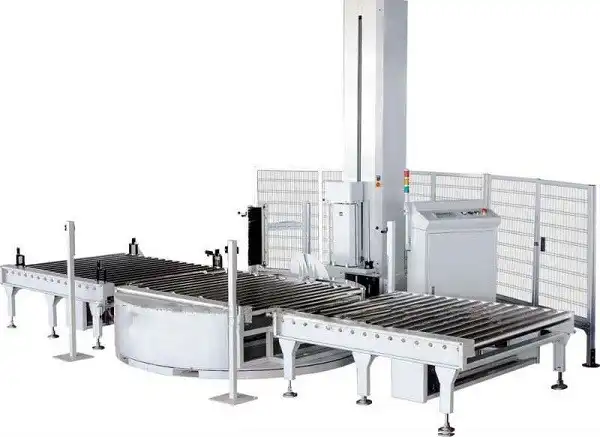
Conclusion: A Strategic Investment in Efficiency
An automatic pallet strapping and packing machine represents a significant step up in packaging automation. By integrating these two crucial processes, FHOPE provides a solution that enhances efficiency, improves load integrity, reduces costs, and promotes safety. For businesses looking to optimize their end-of-line packaging operations and gain a competitive edge, exploring an integrated system is a worthwhile endeavor.
For more details on specific stretch wrapping solutions, visit:
https://www.fhopepack.com/Stretch_wrapping_machine.html
To discuss your specific pallet packaging challenges, contact FHOPE:
info@fhopepack.com

